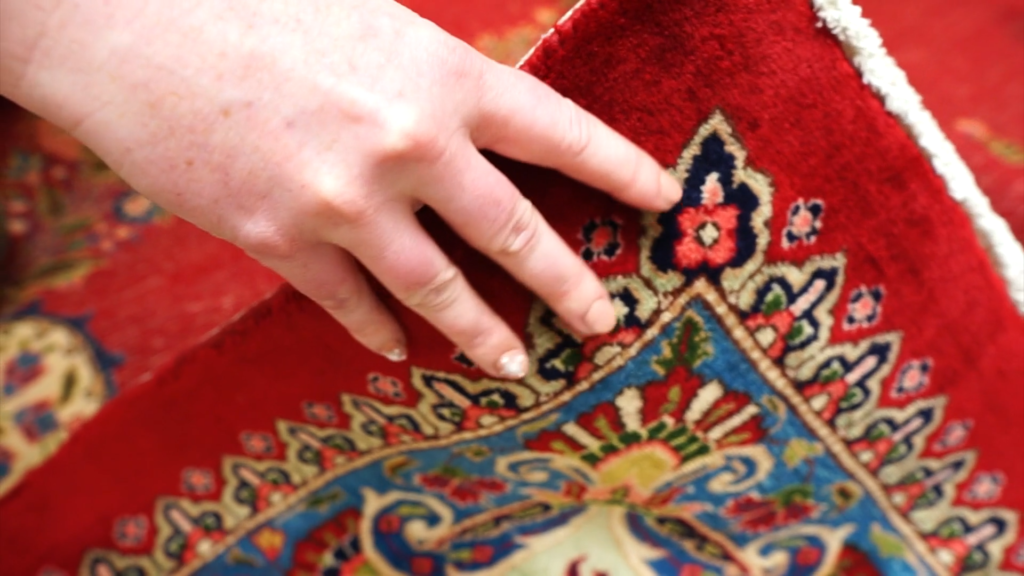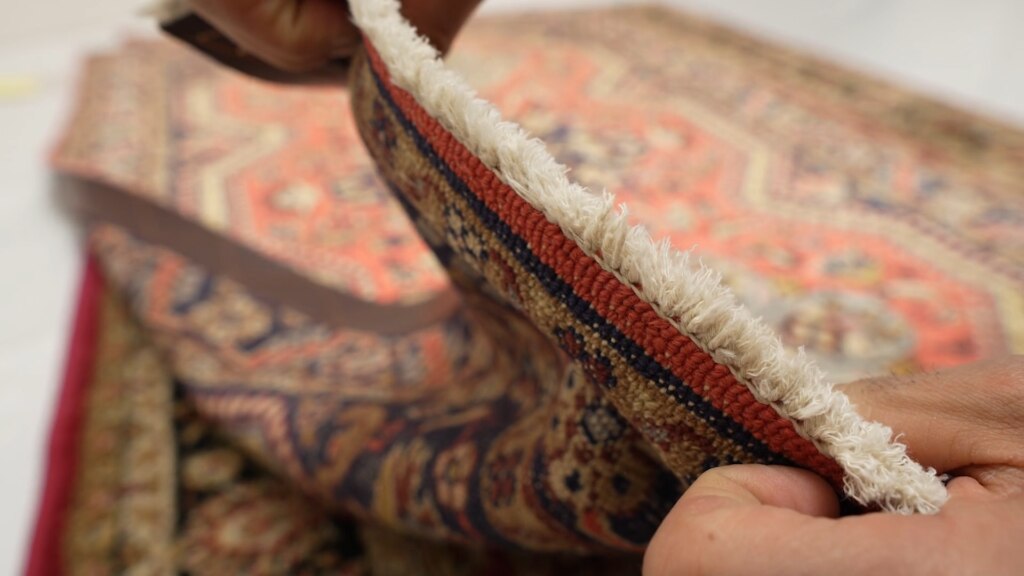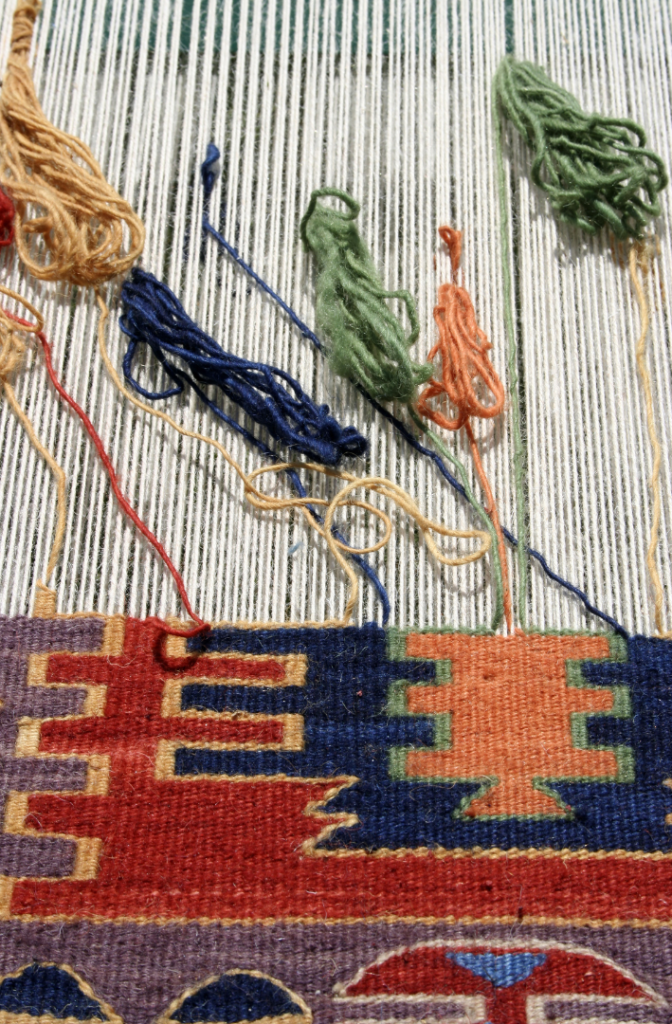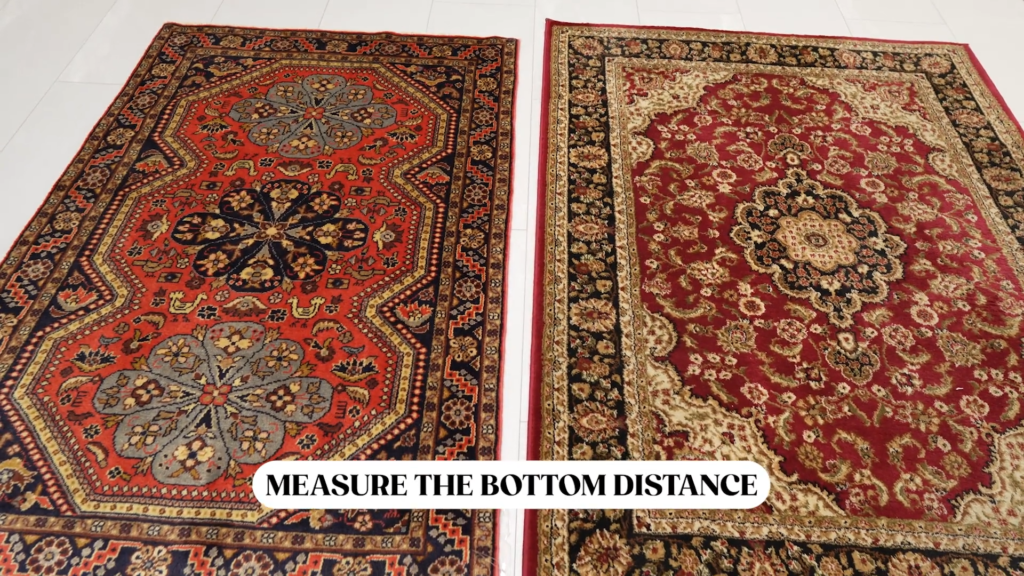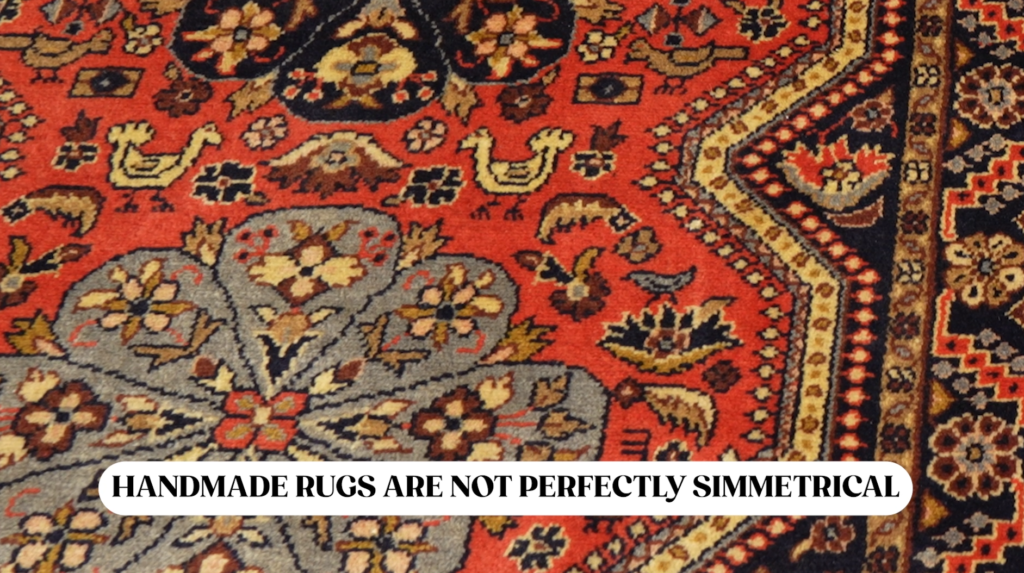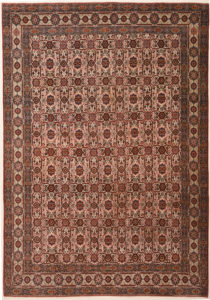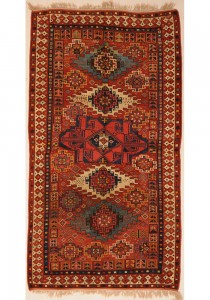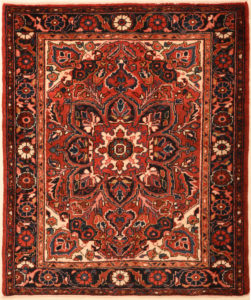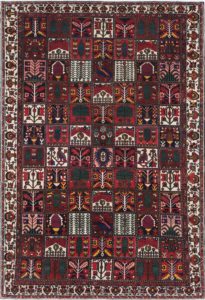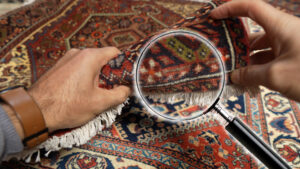Have you ever fallen in love with a Persian or Oriental rug but felt uncertain about its condition or quality? If so, you’re not alone.
In this article, we’ll share tips for inspecting Persian and Oriental rugs to assess their condition and quality.
We’ll cover various aspects to look for when evaluating a rug, including physical damage, repairs, colors, pile consistency, straightness, symmetry, and design continuity.
By the end of this article, you’ll better understand and be more equipped with what to look for in a rug to make a more informed decision.
Table of Contents
Physical Damage Inspection
The first thing to inspect when evaluating a rug is physical damage.
Physical damage can occur in new and used rugs but is more common in pre-owned ones. It can take many forms, such as wear and tear from use, pet damage, stains, spills, and pest damage.
We recommend touching the rug and closely examining the fringes and edges. Run your hands along the fringes and edges to check for damage or wear. While it looks like an additional add-on that plays no significant role in maintaining the rug’s integrity, the fringe is its foundation.
By the very nature of its use, Persian and oriental are subjected to all kinds of damage-inducing experiences. They get walked over. Heavy furniture creates irreversible dents. Moths eat away at the fibers; of course, they are often at the receiving end of all kinds of spills. Check the interior of the rug by crawling in a zigzag pattern over the pile and checking for holes, tears, or moth damage.
Also, flipping the rug over to inspect the back can reveal any significant damage from the pile.
Repairs Inspection
Major repairs to a rug can affect the longevity and value of a rug, so it’s good to know if any have been done.
While it looks like an additional add-on that plays no significant role in maintaining the rug’s integrity, the fringe is the foundation. We recommend inspecting the fringes for any signs of replacement, checking the pile for any noticeable patches, and looking for seams or stitching that may indicate a repair has been made.
Condition refers to if any repairs have been made to the rug. If any repairs have been made, the price point decreases depending on the repair’s severity, especially if the repair is visible. A rug without any repairs will be at a higher price point.
Additionally, inspecting the back of the rug can also reveal any significant repairs that have gone through the pile.
Color Inspection
Colors are a crucial aspect of the beauty of Persian and Oriental rugs, but they can also reveal important information about a rug’s condition.
Look for signs of color bleeding or excessive fading. When color running is present, it decreases the price of the rug depending on the severity. Color bleeding can occur due to professional rug cleaning or improper cleaning of spills. On the other hand, excessive fading can occur when part of the rug has been exposed to direct sunlight, causing one section to fade more than others.
Inspecting the Pile of the Rug
Checking the rug pile is vital if looking at a vintage or antique rug you plan to use in a high-traffic area. It is essential to ensure that there are no bare spots in a pile and that the pile is consistent throughout the rug.
If the pile has been walked on a lot, it will likely get damaged in that section. To inspect the pile, get on your hands and knees and crawl on top of the rug. Feel for any inconsistencies in a pile and inspect it with your eyes. Ensure that all bare areas and areas of the pile are just enough.
Inspecting the Rug for Straightness
Inspecting the rug for straightness is one of the most critical aspects of the rug’s condition. Since these rugs are handmade, they are only as straight as possible.
The straightness of a rug is a factor in its craftsmanship. To inspect the rug for straightness, step back and look at it from a distance. See if the rug’s bottom, center, and top does not look crooked or lopsided. Do the sides of the rug look straight?
One of the easiest ways to check for straightness is to place the rug on top of a hardwood floor or tiles and use the contours of the flooring to determine if the rug follows them straight.
Additionally, you can take a tape measure and measure the rug’s bottom, center, and top sections. The measurements must be similar with no significant differences.
Checking the Rug for Symmetry and Continuity of Design
While checking the rug for symmetry and continuity of design is not necessary to determine its condition, it is essential to ensure that the rug’s design is harmonious.
When inspecting rug symmetry, pay attention to the medallion’s location and ensure that it is in the center of the rug. Ensure that any quarter pieces or anything between the medallion and the field is located symmetrically and that the distances are correct.
While some variance occurs because they are hand-woven pieces, the more exact they are, the greater the price. Suppose a medallion is an exactly mirrored image on both sides; the greater the price.
When it comes to the continuity of the pattern, it depends on the type of rug. City rugs like traditional Persian rugs, such as Tabriz or Kerman rugs, are expected to have a continuity of patterns. In contrast, nomadic or tribal rugs have less continuity due to the weaving technique. The pattern must be consistent throughout the rug with no abrupt changes or disruptions.
Conclusion
By following the tips in this article, you can gain confidence to inspect and accurately evaluate the rug’s condition.
Remember to get up close and personal with the rug, feel for inconsistencies in a pile, and inspect it with your eyes. Step back and view the rug from a distance to check for straightness, symmetry, and design continuity.
With these tips in mind, you can make an informed decision when purchasing a Persian or Oriental rug.
